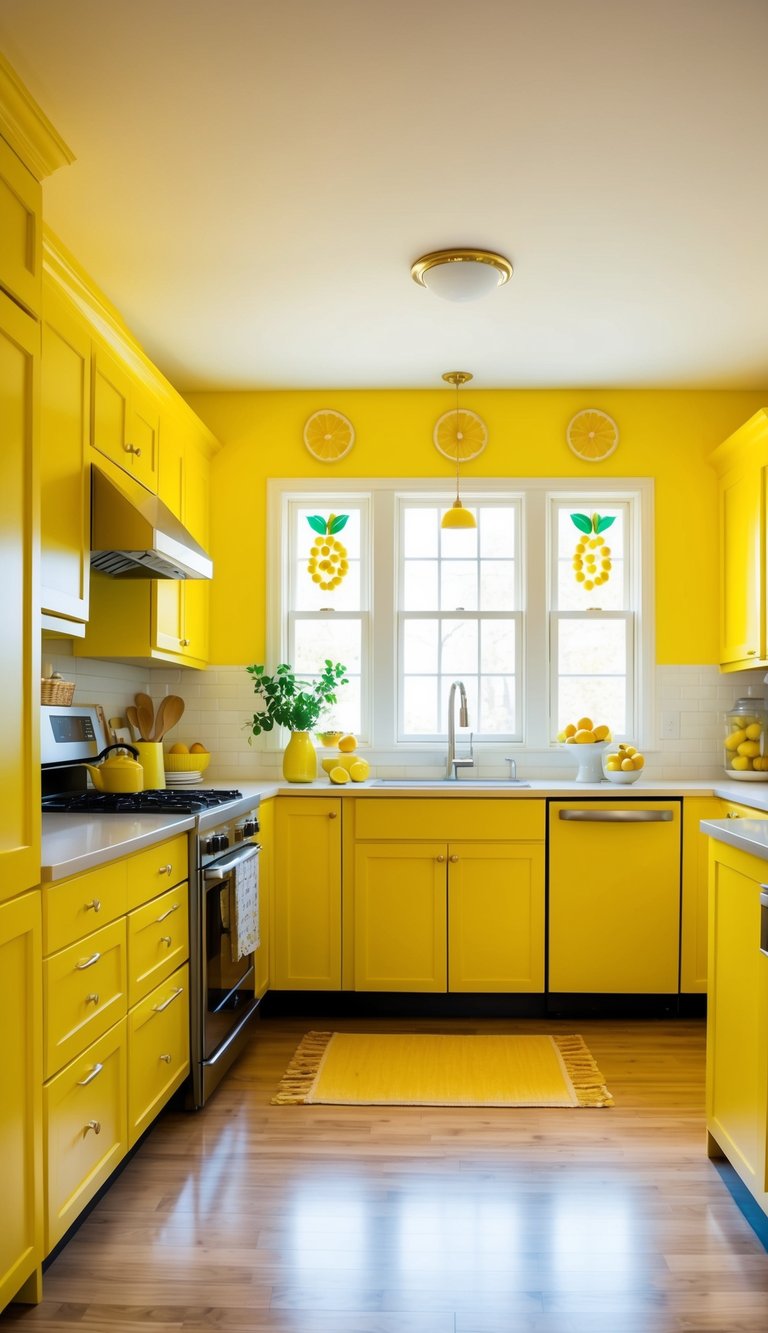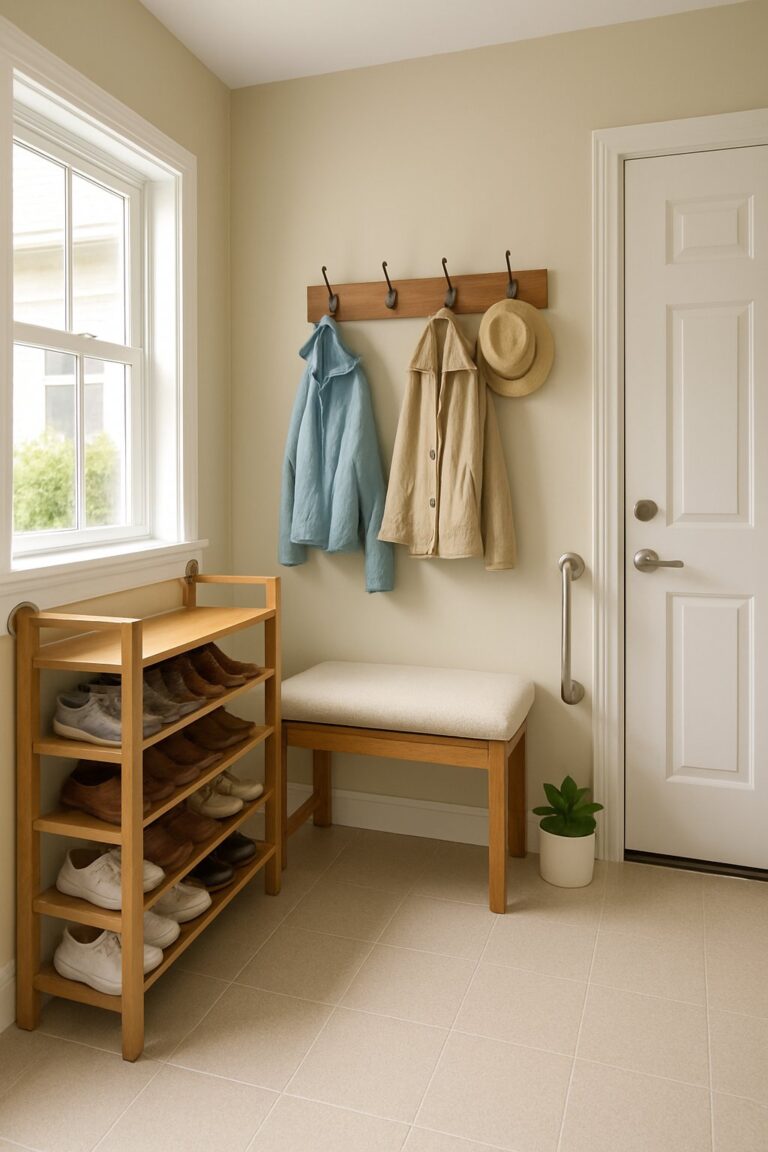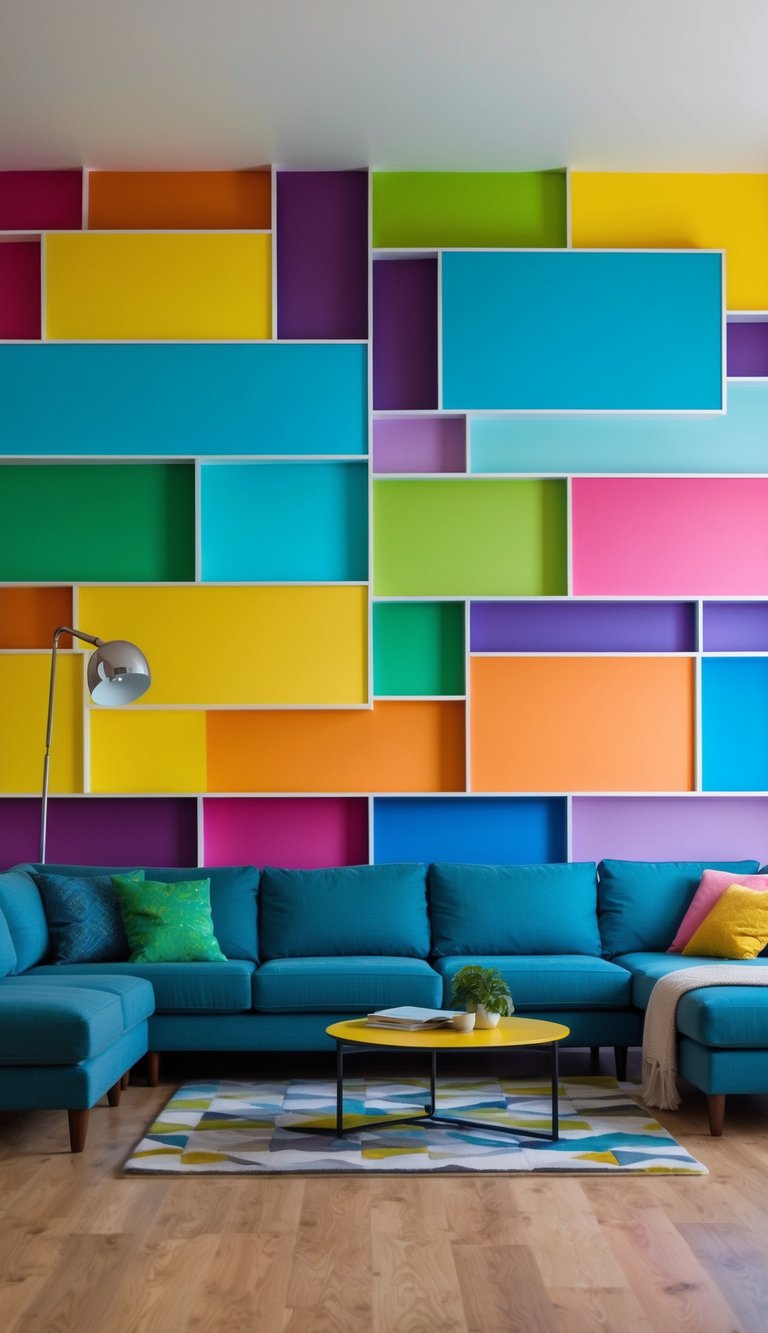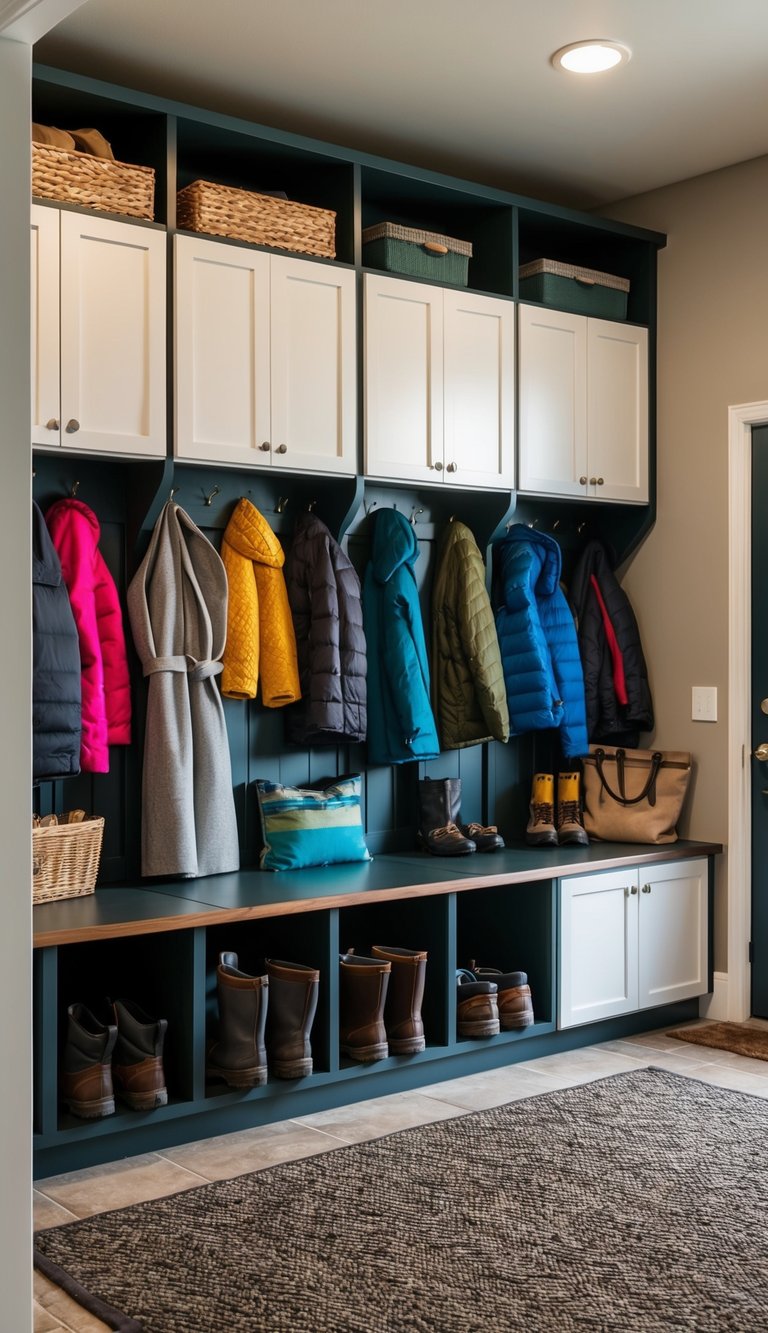Picking the right paint color for a small living room can make a big difference in how spacious it feels. Paint isn’t just about looks – it can actually change how you perceive the size of your room! Many homeowners struggle with tiny living spaces, but with these Small Living Room Paint Color Ideas, you can create an illusion of more space.
The best paint colors for small living rooms can transform a cramped space into one that feels open, airy, and welcoming. Whether you prefer light neutrals that reflect light or bold accent colors that add personality, your paint choice matters. In the following sections, you’ll discover ten color ideas that interior designers recommend for making the most of your compact living area.
1) Soft Mint Green

Soft mint green is a refreshing choice for small living rooms. This light, airy color creates a sense of calm while making your space feel bigger and brighter.
When decorating with mint green walls, you have many color options to pair with it. Forest green accents can create a coordinated look within the same color family, adding depth to your room.
Search for Small Living Room Paint Color Ideas at Amazon
Mint works well in cool, calm living spaces. You can add mint green home accents like pillows, vases, or artwork if you’re not ready to commit to painting the whole room.
Pinterest searches show mint green is a popular choice for living rooms. Many people look for inspiration on how to incorporate this soothing shade into their decor.
The color’s light quality helps reflect natural light, which is especially helpful in small spaces. Your room will feel more open and inviting with mint green walls.
Try mint as an accent wall if you’re hesitant about using it everywhere. This gives you the refreshing pop of color without overwhelming your small space.
2) Warm Beige

Warm beige is making a comeback as people move away from cool grays toward cozier neutrals. This versatile shade creates a soft, welcoming backdrop for any small living room.
Painting your small space in warm beige can make it feel more open and airy while adding a touch of warmth. It’s a great choice if you want a neutral that doesn’t feel cold or sterile.
You can pair warm beige with darker blues for a nature-inspired look that mimics the relationship between sand and ocean. This combination feels both balanced and calming.
For a truly cozy vibe, add different textures through pillows, throws, or rugs in complementary shades. Warm beige walls work beautifully with natural wood tones and can highlight architectural details without overwhelming them.
Consider Sherwin Williams’ Warm Beige SW 0035 for a reliable option that designers love. This shade gives you flexibility with decor choices since it plays well with both modern and traditional furnishings.
When working with a small space, warm beige creates a soft foundation that makes the room feel more spacious and inviting than stark white or dark colors would.
3) Light Dove Gray

Light dove gray is a top choice for small living rooms because it adds elegance without overwhelming the space. This gentle shade creates a calm atmosphere while making rooms feel more open and airy.
You’ll find that dove gray works well with almost any decor style, from modern to traditional. It’s lighter than charcoal but has more depth than white, giving your walls subtle character.
This versatile color reflects natural light beautifully. In rooms with windows, it can make the space feel brighter and more spacious throughout the day.
For your furniture choices, dove gray walls pair nicely with both bold colors and neutral tones. Try adding pops of yellow, blue, or even pink accessories to bring energy to the room.
Wood elements look especially good against dove gray backgrounds. Consider wooden coffee tables or shelving to add warmth to your color scheme.
When painting with dove gray, opt for a matte or eggshell finish. These options hide wall imperfections better than glossier options and create a soft, sophisticated look in your small living space.
4) Creamy White

Creamy white is a perfect choice for small living rooms when you want warmth without darkness. Unlike stark whites, cream adds a soft, cozy feeling that makes your space feel inviting rather than clinical.
Benjamin Moore’s Swiss Coffee and Sherwin Williams’ Alabaster are designer favorites for good reason. They offer that perfect balance between white and beige without leaning too yellow.
Creamy whites work especially well in rooms with limited natural light. They reflect what light you do have while adding warmth that pure whites can’t offer.
You can pair creamy whites with natural wood tones for a farmhouse feel or with black accents for a more modern look. The versatility makes it easy to change your decor without repainting.
For small spaces, consider painting trim and walls the same creamy shade. This creates a seamless look that makes the room feel larger than it actually is.
Try layering different textures in creamy white tones throughout your room. A cream sofa, off-white curtains, and ivory throw pillows create depth without cluttering your visual space.
5) Pale Lavender

Pale lavender is a dreamy alternative to the usual light blue or pink for small living rooms. This delicate color adds a touch of playfulness while keeping your space feeling open and airy.
When you choose a pale lavender, you’re getting a versatile hue that works in different lighting conditions. It can appear more blue or pink depending on the time of day, giving your room subtle variations.
Lavender pairs beautifully with several colors if you want to create interesting combinations. Navy, tangerine, and emerald green all work wonderfully with lavender tones for accent pieces or furniture.
For a small space, pale lavender creates a sense of calm without feeling cold like some lighter blues might. It’s a color that makes your room feel fresh and current while still being subtle enough not to overwhelm the space.
Consider using this color if you want something unexpected but not too bold. Lavender offers a royal touch without dominating your small living room, making it feel both elegant and cozy at the same time.
6) Sandy Taupe

Sandy taupe is a warm neutral that works wonders in small living rooms. This color sits between beige and gray with subtle brown undertones that create a cozy vibe.
When you paint your small space with sandy taupe, you get a versatile backdrop that pairs well with almost any furniture style. Colors like Sherwin Williams’ Studio Taupe or Benjamin Moore’s Smokey Taupe are perfect examples that designers love.
The earthy quality of sandy taupe makes your room feel grounded and calm. It’s less stark than white but not as heavy as darker colors, hitting that sweet spot for small spaces.
You can pair sandy taupe with creamy whites for trim and ceilings to enhance the feeling of space. It also works beautifully with organic elements like wood accents and natural textiles.
For the best results, test your sandy taupe paint sample at different times of day. This color can shift slightly depending on your lighting, sometimes showing more gray or more beige undertones.
7) Sky Blue
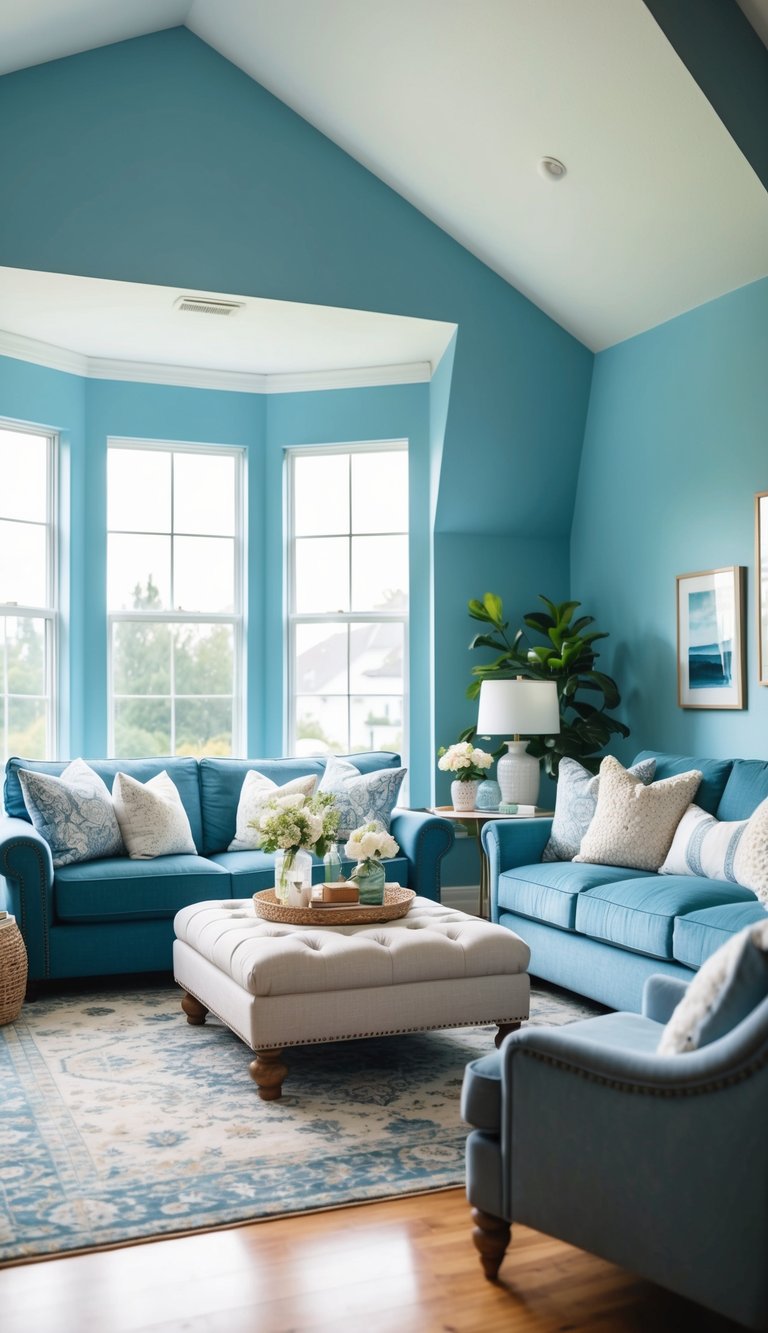
Sky blue paint can make your small living room feel like a breath of fresh air. This light, airy color creates a sense of openness that’s perfect for compact spaces. It tricks the eye into seeing more space than actually exists.
You’ll find that sky blue works well because it reflects natural light beautifully. This helps brighten even the smallest rooms and can make them feel more welcoming and spacious.
Sky blue is also incredibly versatile. You can pair it with white trim for a clean, classic look or with natural wood tones for something more warm and cozy.
Many designers love sky blue because it has a calming effect. After a long day, you’ll appreciate coming home to a serene space that helps you unwind and relax.
When choosing the right shade, look for light blues that have a hint of gray to keep the color sophisticated. Too bright and it might feel childish; too dark and you’ll lose that airy quality.
For accessories, try adding some crisp whites or soft creams to enhance the fresh feeling. Small touches of yellow or coral can provide nice pops of contrasting color.
8) Greige (Gray-Beige)

Greige is the perfect mix of gray and beige, making it the new neutral that’s taking living rooms by storm. This versatile shade works in almost any small living room because it creates warmth without being too dark or too light.
You can find greige paint colors from popular brands like Sherwin Williams and Benjamin Moore. Many designers recommend greige because it acts as a middle ground between cooler and warmer shades.
When you paint your small living room greige, you create a warm, inviting space that doesn’t feel cramped. The color adapts well to different lighting situations throughout the day.
Greige pairs beautifully with most furniture colors and decorating styles. You can dress it up with formal accessories or keep it casual with comfy throw pillows and natural textures.
For small spaces, consider lighter greige tones that will help the room feel more open. The neutral backdrop also makes your artwork and accessories pop without competing for attention.
9) Powder Pink
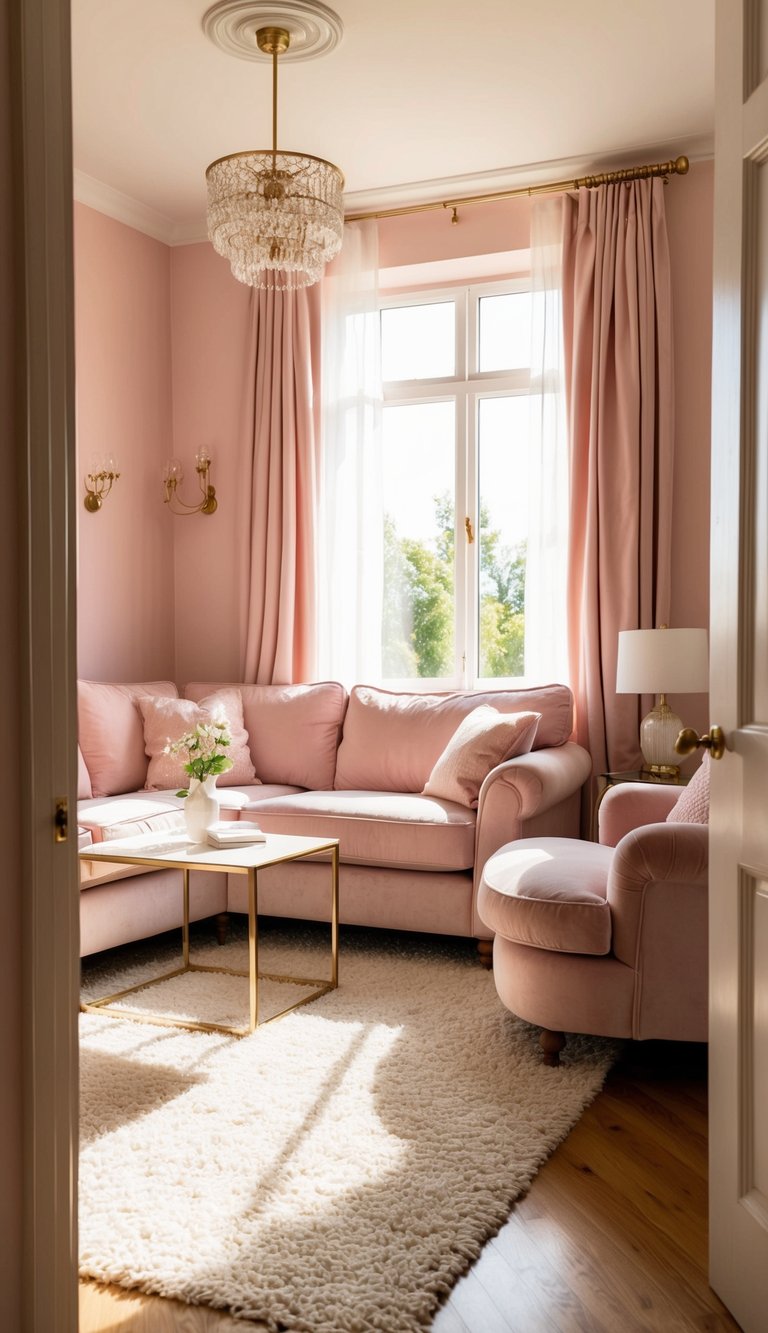
Powder pink brings a soft, delicate touch to small living rooms. This gentle hue creates a warm and inviting atmosphere without overwhelming the space. Dulux’s “Pressed Petal” is a popular powder pink shade that works beautifully in various room styles.
You can use powder pink on all walls for a cozy feel, or try it as an accent wall paired with neutral tones. This versatile color complements many décor styles from modern to traditional.
Furniture choices are flexible with powder pink walls. White, cream, or light gray pieces look crisp against this backdrop. For a bolder statement, try emerald green or navy blue accents that pop against the soft pink.
Powder pink isn’t just for kids’ rooms or nurseries. Designers increasingly use this sophisticated shade in adult spaces too. It creates a sense of calm while adding personality to your small living room.
Natural light enhances powder pink’s warmth, making it an excellent choice for rooms with good windows. In spaces with less light, consider a slightly warmer pink tone to keep the room feeling cozy rather than cold.
10) Dusty Rose

Dusty rose is a subtle, muted pink that adds warmth to small living rooms without overwhelming the space. This soft color sits between pink and beige, making it versatile enough to pair with many different decor styles.
You can use dusty rose as an accent wall to create a focal point in your small living room. It works especially well when paired with neutral colors like light gray or beige for a balanced look.
This color creates a cozy, inviting atmosphere that makes your living room feel more welcoming. It’s particularly effective in spaces that don’t get much natural light, as it adds warmth without darkening the room.
Dusty rose pairs beautifully with gold or brass accents, adding a touch of elegance to your small space. Try incorporating these metallic elements through light fixtures, picture frames, or small decorative pieces.
For a cohesive look, consider adding dusty rose throw pillows or artwork that complements your painted walls. This ties the room together without making the color feel overwhelming.
Color Psychology in Small Living Rooms
The colors you choose for your small living room can dramatically affect how you feel in the space and even how large it appears. Different colors create distinct emotional responses that can help achieve your desired atmosphere.
The Impact of Colors on Mood
Light colors like soft whites, pale blues, and gentle grays can make your small living room feel more open and airy. These shades reflect more light, creating a sense of spaciousness when space is limited.
Bright colors like electric blues and hot reds add energy to your room. They’re perfect if you want your small living room to feel lively and stimulating for social gatherings.
Neutral tans and greige (gray-beige) tones create a calm, grounded feeling. These colors work well if you want your small living room to serve as a peaceful retreat from busy life.
Deep blue-greens can add a touch of sophistication while still making the room feel larger than it is. These colors create a cozy but refined atmosphere.
Choosing Warm vs. Cool Tones
Warm tones like reds, yellows, and oranges bring coziness and intimacy to small living rooms. They can make your space feel welcoming and perfect for conversation areas.
These colors tend to advance visually, meaning they can make walls appear closer. Use them strategically on accent walls rather than all four walls in very tiny rooms.
Cool tones like blues, greens, and purples create a sense of calm and relaxation. They visually recede, making your small room appear more spacious.
For the most versatile small living room, consider a neutral base with either warm or cool undertones. You can then add color through accessories that are easy to change as your mood or the seasons shift.
Creating Space with Paint
Paint is one of the most powerful tools for making a small living room appear larger. The right colors can open up your space, create depth, and transform the entire feel of your room without moving a single piece of furniture.
Using Lighter Shades for Illusion of Space
Light colors naturally make spaces feel more open and airy. When you choose pale tones like soft whites, light grays, or gentle creams for your small living room, your walls seem to recede. This creates the illusion of more space.
Benjamin Moore suggests several light options that work well in compact areas. These include neutral tans and classic whites that reflect more light around the room.
For a slight twist on basic white, try:
- Pale sky blues
- Soft greens
- Light greiges (gray-beige blends)
These colors add a hint of personality while still keeping the space feeling open. The key is to avoid very saturated or dark colors on all walls, as these can make your room feel like it’s closing in on you.
Accent Walls: Highlighting Without Overwhelming
An accent wall lets you add color without shrinking your space. Pick one wall—usually the focal point of your room—and paint it in a bolder shade than the others.
Good candidates for accent walls include:
- The wall behind your sofa
- A fireplace wall
- Any wall with architectural interest
According to design experts, rich blue-green hues make excellent accent colors. They add depth while still keeping the room feeling spacious when the other walls remain light.
You can also use this technique to create visual interest in an otherwise neutral room. Just remember that balance is important. Your accent color should complement your furniture and decor, not compete with it.



